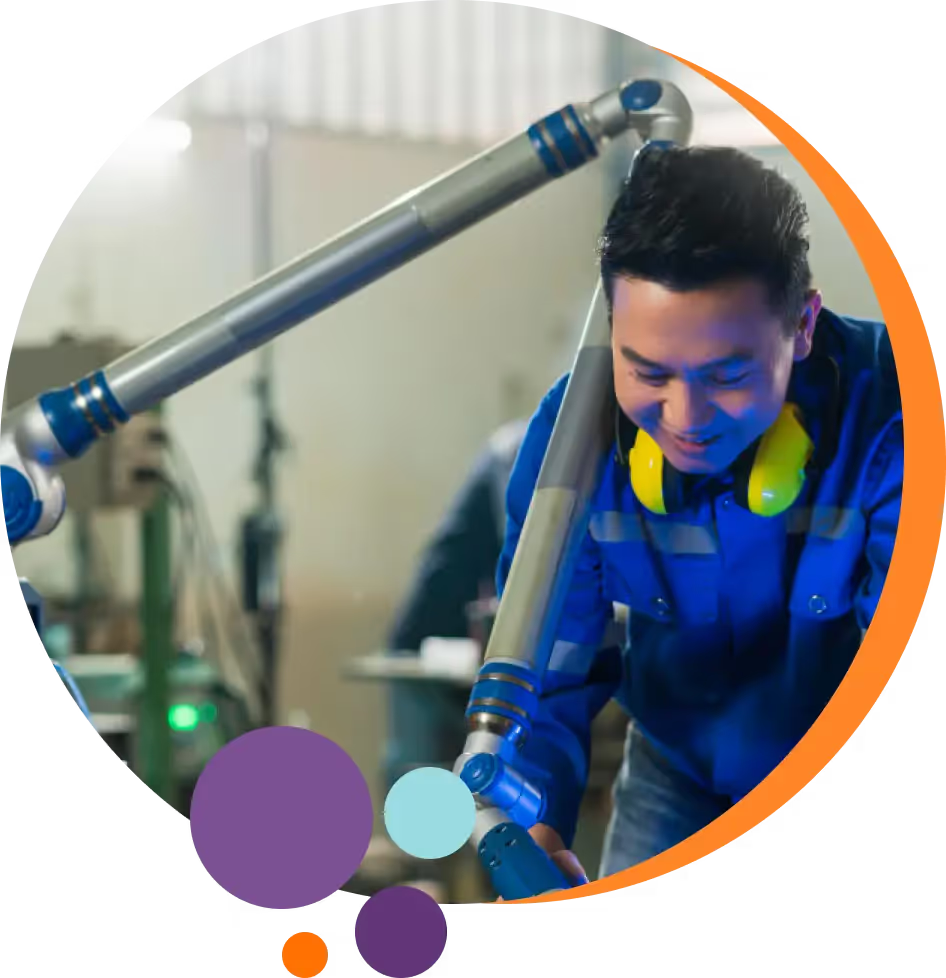Advanced Application of Some Notable Robotic Arms
The Canadarm and its successor, the Canadarm2, are two examples of robotic arm projects with several degrees of freedom used in space. These robotic arms have been utilized for several activities, including the deployment and recovery of satellites from the Space Shuttle's cargo compartment and a number of other activities.
It also includes the deployment and recovery of satellites from the Space Shuttle's cargo compartment as well as the inspection of the Space Shuttle utilizing a specially designed boom with cameras and sensors connected at the end effector.
Robotic arms are also used by the Mars rovers Curiosity and Perseverance. Moreover, Perseverance also has a smaller sample caching arm hidden inside its body beneath the rover in its caching assembly.
Understanding When to Use Robotic Arms and When to Avoid Them
The fact that robotic arms can effectively complete the majority of jobs explains why they are so prevalent in business. Applications with specific characteristics enable robotic arms to outperform other robot types.
High levels of dexterity are required, along with a hybrid work environment, huge payload capacity, and reach requirements. These are some characteristics of your application that can cause you to think about a robotic arm.
A distinguishing feature of articulated arm types is dexterity. Robotic arms might be an excellent fit for applications that call for a machine to twist and manipulate the product at unusual angles. Particularly, collaborative, and the six-axis articulated arms. Robotic welding is an example of this kind of application.
Additionally, the robot must frequently travel at an angle in a number of different planes to complete this mission. For the majority of other robot kinds, this is challenging or impossible to accomplish. Due to their selective compliance, SCARAs are a robot type that may struggle in this situation. This means that not all robotic arms have this feature.
Robotic arms frequently strike a decent balance between reach and payload capacity without significantly slowing down. This enables them to do demanding jobs that call for both features. Palletizing is a good demonstration of this.
In order to choose boxes and fill a pallet, the palletizing application frequently calls for the robot to cover a wide range of motion. Boxes that are completely full can weigh a lot. Six-axis robots are frequently able to meet this demand for both strength and range. The strength and mobility of other robot types, such as delta robots, are insufficient for carrying out these operations on a large scale.
Robots face particular challenges in hybrid workplaces. Robotic technology traditionally has to be isolated from the outside work environment since it poses some risks to human operators. Some applications need a combination of humans and robots to perform at their best. These kinds of tasks are best handled by collaborative robots.
Collaborative robot technology is frequently used in material handling applications. This entails that while the robot handles the loading and unloading of the material into a machine, a human operator can put raw materials into a staging area next to the cobot. For some people, this loading and unloading may be hazardous. A safer working environment is produced by removing them from danger.
Industries and Uses for Robotic Arms
The above-mentioned robot types are used in a wide range of businesses and situations. The variety of applications for robotic arms in the industry is demonstrated by these typical industries which are electronics, food and beverage, medical sciences, plastics, pharmaceuticals, aerospace, and automotive industries.
Because there are so many different industries, it makes sense that there is also a wide range of applications. Packaging, palletizing, material handling, painting, welding, assembly, inspection, cutting, and dispensing are a few of the most popular uses. Robotic arms are versatile enough to be excellent options for a wide range of applications in any sector.
They successfully balance precision, reach, payload capacity, and speed. They can thus accomplish a variety of activities efficiently.
These characteristics also give manufacturers the flexibility to repurpose these robots for uses other than those for which they were designed. Other types of robots might find this more challenging. This type of robot benefits greatly from the versatility that robotic arms offer.
If you are wondering how to make a robotic arm, here is how to do it with easy-to-use Intel technology.
Building Industrial Robotic Arms With Intel® Technology
Intel has the hardware, software, and ready-to-use solutions you need to create and use industrial robotic arms, including CPUs and GPUs with built-in, AI inference acceleration as well as free algorithms, middleware, and reference implementations.
The powerful computing capabilities offered by Intel® processors for IoT and embedded applications are essential for automated operation. Robotic arms can sense and comprehend their surroundings and objects thanks to Intel® RealSenseTM technology.
In order to ensure that robotic arms can function in a variety of environments and under changing circumstances, a strong range of depth cameras is necessary.
Additionally, the Intel® Distribution of OpenVINO toolkit enables developers to streamline the development process and enable a write-once, deploy-anywhere model by letting them to optimize, adjust, and run comprehensive AI inference using a built-in model optimizer, runtime, and development tools.
Companies in all sectors are under pressure to increase worker safety while also achieving new heights of production and efficiency.
By collaborating with Intel, businesses can significantly improve their robotic arms with cutting-edge sensing technologies, AI, machine and computer vision, and edge networking to meet new productivity and performance requirements as well as give them a competitive edge in a world that is constantly changing.
Intel® Technology and Solutions for the Edge
You can design and implement edge solutions with the assistance of Intel's product line and business ecosystem. The Intel® Edge Software Hub provides prevalidated software to help you research, create, and test your edge solutions.
For the ingestion of video and time series data, Intel® Edge Insights for Industrial is available as a prevalidated, ready-to-deploy software reference design. It has AI analysis and can publish to both local and cloud applications. Additionally, because it is based on Docker, it is easy to tweak and adapt for use with apps.
A free, software-defined reference platform for industrial controls is available under the name Intel® Edge Controls for Industrial. It blends functional safety, real-time, deterministic computing, and standards-based industrial connection with administration akin to IT.
For the deployment of computer vision at the edge, Intel® Vision Products provide a wide range of general-purpose CPUs and purpose-built accelerators.
In order to power the machine vision, smart manufacturing, and industrial control systems necessary for robotics solutions, industrial automation, predictive maintenance, automated vision inspection for defect detection, and more, Intel® machine vision solutions for Industry 4.0 bring together the hardware, software, and ready-to-run solutions.
Summary
Robotic arms are perfect for tasks that need to be done repeatedly, consistently, and with a high degree of accuracy, as well as for situations where a human worker could find it difficult to do safely.
A robotic arm is comparable to a human hand. For the movement of the arm, it has a free rotating joint (rotation) and a translational joint (displacement). Typically, an electric driver (motor) or a pneumatic and hydraulic system powers this arm movement (pistons).
In addition, robotic arms may be programmed to carry out an almost unlimited variety of tasks since they are quick, precise, and dependable. Whether desktop-mounted or installed as part of a high-volume production line, industrial robotic arms are now more widely used than ever before.
They are now frequently found across a broad range of industries and sectors, including laboratories, testing, and sample handling, manufacturing, industrial automation and automated assembly, machine feeding, and machine access.
To assist them in carrying out their given tasks, various attachments are frequently sold with robot arm assembly and construction kits. They may include grippers or suction cups as well as a variety of sensors and robotic controls that offer sophisticated environmental response capabilities.

.webp)


















.webp)
.webp)


